Are you a Quiet Speculation member?
If not, now is a perfect time to join up! Our powerful tools, breaking-news analysis, and exclusive Discord channel will make sure you stay up to date and ahead of the curve.
You don't need a Grand Prix to make it a Modern month. The SCG Charlotte Modern Open came to a close this weekend, with just over 500 players battling for the prize. Even though the Open was significantly smaller than the GPs we saw earlier in June (and smaller than the last SCG Modern Open in Columbus), SCG Charlotte was still an exciting midpoint between the June circuit and the upcoming GP Oklahoma City. We're in one of the most diverse Modern metagames of all time and SCG Charlotte pulled no punches, fins, tentacles, and whatever the heck is dangling in front of Gurmag Angler's mouth in showing the dynamic format. It was also the first major Modern event with Magic Origins cards, and at least one of the new staples made his prodigal debut on the main stage.
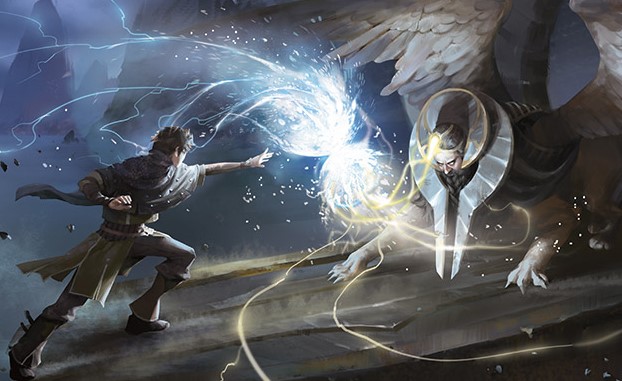
With a Day 2 metagame breakdown and a full Top 32 list of decks, we have plenty of exciting data to analyze and a lot of decks to check in on. Our own metagame update for August is coming out in the next week or two and SCG Charlotte will undoubtedly be a big factor in our deck tierings. Today, I want to look at the four biggest takeaways you should keep in mind when factoring SCG Charlotte into your Modern preparations. Because SCG Charlotte was a somewhat smaller event, we need to temper some of our conclusions to reflect the number of players and the more modest (relative to a GP, at least) stakes. These takeaways respect the event size and focus on the biggest conclusions that should translate to larger events in September. Whether you're testing decks for GP Oklahoma City, grinding out MTGO Dailies, or just excited to rock your Comic Con Jaces, this breakdown has something for you.
[wp_ad_camp_1]
Hits: Grixis Control (and Jace)
Grixis Control? Grixis Midrange? Grixis Whatever? I don't care what you call it but Modern's newest top-tier deck continues to cement its place as a big format player. Michael Majors piloted his Grixis Control list to a fifth place finish at the event, packing a playset of Jace, Vryn's Prodigy instead of the 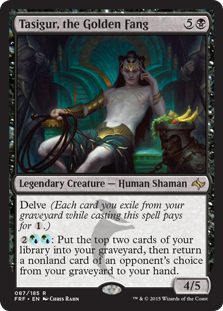 customary Gurmag Angler duo or trio. Tasigur, the Golden Fang was still out in force, seeing maindeck play in not only every Grixis Control list in the Top 32, but also every Grixis list except one (an incorrectly classified Grixis, not UR, Twin by Robert Chase) in those top decks. Of course, Grixis Control was the big winner here. Of the nine players making Day 2 with Grixis Control, four converted into a Top 32 finish. This conversion rate, 44%, was one of the best rates of the most-played decks in the entire Open. Looking only at decks with 6+ appearances on Day 2, Grixis Control had the second-highest conversion rate to the Top 32 (the highest, Abzan, gets its own section below). When you factor in the prevalence of Grixis Delver and Grixis Twin in both the Top 32 and on Day 2, it becomes clear that Grixis is handily the most popular color pairing in present-day Modern. This is critical for anyone serious about winning big events in the future. Whether you're playing against Control, Twin, or Delver, be prepared for the synergies of Snapcaster Mage, Kolaghan's Command, Terminate, and the delve creatures.
customary Gurmag Angler duo or trio. Tasigur, the Golden Fang was still out in force, seeing maindeck play in not only every Grixis Control list in the Top 32, but also every Grixis list except one (an incorrectly classified Grixis, not UR, Twin by Robert Chase) in those top decks. Of course, Grixis Control was the big winner here. Of the nine players making Day 2 with Grixis Control, four converted into a Top 32 finish. This conversion rate, 44%, was one of the best rates of the most-played decks in the entire Open. Looking only at decks with 6+ appearances on Day 2, Grixis Control had the second-highest conversion rate to the Top 32 (the highest, Abzan, gets its own section below). When you factor in the prevalence of Grixis Delver and Grixis Twin in both the Top 32 and on Day 2, it becomes clear that Grixis is handily the most popular color pairing in present-day Modern. This is critical for anyone serious about winning big events in the future. Whether you're playing against Control, Twin, or Delver, be prepared for the synergies of Snapcaster Mage, Kolaghan's Command, Terminate, and the delve creatures.
Tasigur isn't the only legendary creature to join the Grixis ranks and propel the deck to the top. Jace, Vryn's Prodigy/jace, Telepath Unbound saw almost as 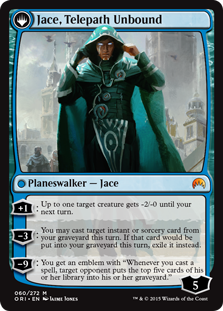 much press this weekend as those ridiculously fake Commander fetchlands, and although he wasn't a staple in every Grixis deck, Michael Majors' Jace playset was the talk of the tournament. In my own Origins review earlier this summer, I gave Jace a lukewarm reception on the weaknesses of his +1 ability, which felt irrelevant in too many unfair matchups. I also said "Jace is the likeliest walker to break out of the unplayable category and rise into a tiered control deck", and SCG Charlotte was the perfect scene for this to happen. A big contributor to this was the relative lack of unfair decks at the Open. Neither Amulet Bloom nor Grishoalbrand had more than a single representative on Day 2. Twin saw a lot of play, but if the Top 32 lists are any indication, many of the lists were running Splinter Twin Plan Bs with Tempo or Control Plan As. This is the kind of environment where Jace thrives. Our very own Trevor Holmes has been singing Jace's praises for weeks now, and he went to the event with his own Grixis Control list to finish with 21 points on Day 2. You can expect more Jace in the weeks to come, which is bad news if you are trying to outgrind or outvalue Grixis Control but good news if you are trying to do unfair things.
much press this weekend as those ridiculously fake Commander fetchlands, and although he wasn't a staple in every Grixis deck, Michael Majors' Jace playset was the talk of the tournament. In my own Origins review earlier this summer, I gave Jace a lukewarm reception on the weaknesses of his +1 ability, which felt irrelevant in too many unfair matchups. I also said "Jace is the likeliest walker to break out of the unplayable category and rise into a tiered control deck", and SCG Charlotte was the perfect scene for this to happen. A big contributor to this was the relative lack of unfair decks at the Open. Neither Amulet Bloom nor Grishoalbrand had more than a single representative on Day 2. Twin saw a lot of play, but if the Top 32 lists are any indication, many of the lists were running Splinter Twin Plan Bs with Tempo or Control Plan As. This is the kind of environment where Jace thrives. Our very own Trevor Holmes has been singing Jace's praises for weeks now, and he went to the event with his own Grixis Control list to finish with 21 points on Day 2. You can expect more Jace in the weeks to come, which is bad news if you are trying to outgrind or outvalue Grixis Control but good news if you are trying to do unfair things.
Even if you don't think Grixis Control is as good as many are saying, it's hard to doubt that other players will buy into the hype and pile on the Grixis train. We are entering an era where Grixis Control will always be a top five most-played deck, and the metagame will need to shift accordingly. I expect to see more Merfolk in the coming weeks as players adapt to the Grixis menace. Merfolk was well-positioned even before the Open, and now it's looking better and better by the day.
Hits: UW Emeria Control
Enough Grixis: let's talk Emeria, the Sky Ruin. Michael Segal piloted a team of Emeria, Sun Titan, Court Hussar, and a bunch of other 2011 Standard expatriots to a 13th place finish at the Open. As the commentators reminded us all 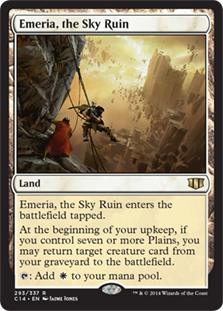 weekend, this is a list that doesn't even look like a Modern deck at all, let alone a deck that could make Top 16 at a major event. Segal's list is a who's who of offbeat, fringe, and (let's be honest) mediocre-looking cards that somehow clawed their way through a high-powered gauntlet of Twin, Burn, Affinity, and Jund en route to his finish. Once you get past the disbelief at seeing Mortarpod, Detention Sphere, and Ojutai's Command in a high-placing list, you can start to notice just where this kind of deck excels. Lone Missionary and Wall of Omens give the deck a surprisingly robust early game, particularly in tandem with the Path playset and the random disruption in Aether Spellbomb and Mortarpod. Both Supreme Verdict and Ojutai's Command give the deck stabilization power past turn four, which is all UW Emeria Control needs to get into the mid-to-late game where its Emeria and Titan engines can really shine. This gameplan is particularly strong against decks built for grinding small advantages, such as Jund and Grixis Control.
weekend, this is a list that doesn't even look like a Modern deck at all, let alone a deck that could make Top 16 at a major event. Segal's list is a who's who of offbeat, fringe, and (let's be honest) mediocre-looking cards that somehow clawed their way through a high-powered gauntlet of Twin, Burn, Affinity, and Jund en route to his finish. Once you get past the disbelief at seeing Mortarpod, Detention Sphere, and Ojutai's Command in a high-placing list, you can start to notice just where this kind of deck excels. Lone Missionary and Wall of Omens give the deck a surprisingly robust early game, particularly in tandem with the Path playset and the random disruption in Aether Spellbomb and Mortarpod. Both Supreme Verdict and Ojutai's Command give the deck stabilization power past turn four, which is all UW Emeria Control needs to get into the mid-to-late game where its Emeria and Titan engines can really shine. This gameplan is particularly strong against decks built for grinding small advantages, such as Jund and Grixis Control.
UW Control's success over the weekend is a big gain for Modern. For one, this kind of deck is the very definition of a control deck: deliberately interactive at every stage of the game and with a slow, incremental win condition. I personally think there are other spaces control can occupy in Modern, but 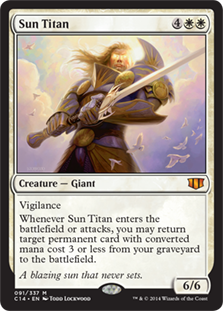 it's good to have more representatives in this oftentimes underrepresented area of "traditional control". Another reason for UW Control's significance is its price tag. With no Snapcaster Mages, Cryptic Commands, and only a single playset of fetchlands, this is by far one of the cheapest decks with competitive potential: a mere $215 with TCG Mid prices (and not a single card under lightly-played condition!). Snapcaster's exclusion seems suboptimal to me, especially because lategame Emeria-recurred Snapcasters feel very unfair. Then again, Snapcaster's targets are more limited here than in other control decks. Notably absent are the cantrips like Thought Scour and Serum Visions, along with the burn spell Plan B you see so often in red-based Snapcaster decks. Perhaps Snapcaster has a home here, in which case the pricetag increases significantly. If not, however, this is a strong, cheap choice for future events. A final reason for UW Control's importance is its representation of format diversity. If a Sun Titan playset can make its way to the Top 16 of a 15 round event (indeed, the deck made its way to the T16 based largely on Titan himself), it forces us to reevaluate a lot of other cards previously dismissed as unplayable or subpar.
it's good to have more representatives in this oftentimes underrepresented area of "traditional control". Another reason for UW Control's significance is its price tag. With no Snapcaster Mages, Cryptic Commands, and only a single playset of fetchlands, this is by far one of the cheapest decks with competitive potential: a mere $215 with TCG Mid prices (and not a single card under lightly-played condition!). Snapcaster's exclusion seems suboptimal to me, especially because lategame Emeria-recurred Snapcasters feel very unfair. Then again, Snapcaster's targets are more limited here than in other control decks. Notably absent are the cantrips like Thought Scour and Serum Visions, along with the burn spell Plan B you see so often in red-based Snapcaster decks. Perhaps Snapcaster has a home here, in which case the pricetag increases significantly. If not, however, this is a strong, cheap choice for future events. A final reason for UW Control's importance is its representation of format diversity. If a Sun Titan playset can make its way to the Top 16 of a 15 round event (indeed, the deck made its way to the T16 based largely on Titan himself), it forces us to reevaluate a lot of other cards previously dismissed as unplayable or subpar.
I can't decide if Segal is just the luckiest budget player of the summer, or if his deck was really onto something. I'm leaning towards the latter based on the internal synergies within the deck, as well as UW Control's broader metagame profile even before the event. Looking only at MTGO, UW Control decks make up about 2.8% of the metagame, with roughly 1% of that falling in the Pilgrim's Eye/Emeria/Lone Missionary category. This suggests broader viability before Segal even sleeved up the deck, so perhaps his finish will push that further. I'm excited to see what the deck does in the coming months.
Hits: Abzan's Return?
Back in early June, I predicted that Jund would surpass Abzan as the BGx deck of choice. By the end of the month, it was clear that Jund's Dark Confidants and  Terminates had triumphed over Abzan's Siege Rhinos and Path to Exiles. Abzan plummeted into tier 2 with a sub 4% metagame share, Jund rocketed to the top of the charts, and there was much rejoicing by anyone not named Willy Edel. As anyone who has played Modern for more than a few months knows, however, BGx is a versatile creature and neither Tarmogoyf nor his mistress Liliana of the Veil are particularly loyal to one pairing over the other. If the metagame shifts, so too can BGx. SCG Charlotte saw a small but noteworthy shift back to Abzan, and although it's too early to know if this signals a more permanent change, it's something we need to keep an eye out for. Five players made Day 2 with Abzan and three of them converted into a Top 32 finish. On top of this 60% conversion rate, Charles Stephens brought his own traditional Abzan list to the Top 8 before falling to Tom Ross's Infect, a historic Abzan predator, in the quarterfinals.
Terminates had triumphed over Abzan's Siege Rhinos and Path to Exiles. Abzan plummeted into tier 2 with a sub 4% metagame share, Jund rocketed to the top of the charts, and there was much rejoicing by anyone not named Willy Edel. As anyone who has played Modern for more than a few months knows, however, BGx is a versatile creature and neither Tarmogoyf nor his mistress Liliana of the Veil are particularly loyal to one pairing over the other. If the metagame shifts, so too can BGx. SCG Charlotte saw a small but noteworthy shift back to Abzan, and although it's too early to know if this signals a more permanent change, it's something we need to keep an eye out for. Five players made Day 2 with Abzan and three of them converted into a Top 32 finish. On top of this 60% conversion rate, Charles Stephens brought his own traditional Abzan list to the Top 8 before falling to Tom Ross's Infect, a historic Abzan predator, in the quarterfinals.
I can't stress enough that it's not yet clear if Abzan is on the rise or if this was just a one-time anomaly. We'll need to review the full August metagame data to see if other trends suggest movement in one 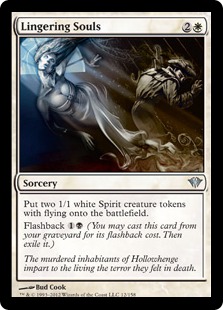 direction or the other. In the meantime, we can speculate on some reasons for Abzan's possible success over Jund. One big explanation is the same reason for Jace's success in Grixis Control: the format is increasingly fair, grindy, and midrangey these days. Abzan thrives in this kind of metagame, where Lingering Souls clogs up Angler, Tasigur, and Goyf-heavy boards for multiple turns and where Path to Exile kills these cards much better than Lightning Bolt. Incidentally, Jace is a great card in the inevitable Abzan vs. Grixis matchup because Abzan can't remove him as efficiently as Jund, but that's a topic for another time. Rhino is also a big factor here, providing incremental damage against lifeloss-reliant Grixis decks and putting up a giant Bolt-proof and Kolaghan's Command-proof body.
direction or the other. In the meantime, we can speculate on some reasons for Abzan's possible success over Jund. One big explanation is the same reason for Jace's success in Grixis Control: the format is increasingly fair, grindy, and midrangey these days. Abzan thrives in this kind of metagame, where Lingering Souls clogs up Angler, Tasigur, and Goyf-heavy boards for multiple turns and where Path to Exile kills these cards much better than Lightning Bolt. Incidentally, Jace is a great card in the inevitable Abzan vs. Grixis matchup because Abzan can't remove him as efficiently as Jund, but that's a topic for another time. Rhino is also a big factor here, providing incremental damage against lifeloss-reliant Grixis decks and putting up a giant Bolt-proof and Kolaghan's Command-proof body.
If the Abzan shift is real, we are likely to see a return to the Pro Tour Fate Reforged metagame where increasingly linear decks (Tom Ross had the right idea with his SCG Charlotte Infect list) emerge to battle removal-inefficient Abzan grinders. I'm not yet convinced Abzan is the real deal if for no other reason than Joseph Herrera's tournament win with his own Jund list. Still, it's hard to ignore Jund's abysmal conversion rate (only one of the eight Day 2 players made it to the Top 32) and Abzan's relative success.
Misses: Burnt Out
Speaking of abysmal conversion rate, no single decktype did worse at the Open than Burn. Ten players made Day 2 with the deck. One of them made it to the Top 32. That lone Burn champion, Arya Roohi, 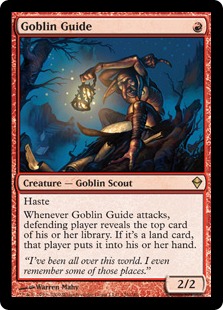 didn't even crack the Top 16, settling at 22nd with Modern's most linear aggro deck. This is definitely not to diminish Roohi's finish (congratulations!), but it is very much to highlight some glaring shortcomings in the most-played deck at the Open. To some extent, no one should be too surprised with Burn's lackluster showing. There are few decks hurt more by sideboarding and over-preparation than Burn (Affinity is another one in this category). The more lifegain and countermagic you bring, the better the Burn matchup becomes, and the Top 8 alone was packed with Dispel, Kitchen Finks, Feed the Clan, Spell Pierce, and other ways to beat the Burn game. Players have also shifted away from Destructive Revelry and Wear // Tear bait like Leyline of Sanctity and Dragon's Claw, which makes Games 2 and 3 even more an uphill battle than they were before.
didn't even crack the Top 16, settling at 22nd with Modern's most linear aggro deck. This is definitely not to diminish Roohi's finish (congratulations!), but it is very much to highlight some glaring shortcomings in the most-played deck at the Open. To some extent, no one should be too surprised with Burn's lackluster showing. There are few decks hurt more by sideboarding and over-preparation than Burn (Affinity is another one in this category). The more lifegain and countermagic you bring, the better the Burn matchup becomes, and the Top 8 alone was packed with Dispel, Kitchen Finks, Feed the Clan, Spell Pierce, and other ways to beat the Burn game. Players have also shifted away from Destructive Revelry and Wear // Tear bait like Leyline of Sanctity and Dragon's Claw, which makes Games 2 and 3 even more an uphill battle than they were before.
To be clear, Burn isn't without its strengths. Eidolon of the Great Revel remains a format powerhouse, either giving Burn a quick edge in an aggressive mirror or taking over fair games  with nonstop pressure. The Atarka's Command/Skullcrack pairing is also still a strong way to fight lifegain, although even Roohi's seven total copies of the cards wasn't enough to get him into the Top 16. Roohi's shift to maindecked Wild Nacatl was one way to address the classic Burn problem of running out of steam. In many ways, Nacatl acts as a second set of Goblin Guides, giving you a recurring damage source that can keep swinging under Negates and Dispels. Nacatl also struggles with the omnipresent Tasigurs and Anglers, so it's not as if Nacatl is necessarily the solution to Burn's woes. That said, Nacatl has seen a lot of play in recent MTGO Dailies, which might signal a larger shift towards Nacatl-based Naya Burn lists. This will probably be a necessary shift in the longrun, especially with the uptick in Grixis decks and their increased arsenal of countermagic (indeed, Roohi brought Exquisite Firecraft to combat this).
with nonstop pressure. The Atarka's Command/Skullcrack pairing is also still a strong way to fight lifegain, although even Roohi's seven total copies of the cards wasn't enough to get him into the Top 16. Roohi's shift to maindecked Wild Nacatl was one way to address the classic Burn problem of running out of steam. In many ways, Nacatl acts as a second set of Goblin Guides, giving you a recurring damage source that can keep swinging under Negates and Dispels. Nacatl also struggles with the omnipresent Tasigurs and Anglers, so it's not as if Nacatl is necessarily the solution to Burn's woes. That said, Nacatl has seen a lot of play in recent MTGO Dailies, which might signal a larger shift towards Nacatl-based Naya Burn lists. This will probably be a necessary shift in the longrun, especially with the uptick in Grixis decks and their increased arsenal of countermagic (indeed, Roohi brought Exquisite Firecraft to combat this).
Misses: "Broken" Decks
July was a rough month for banning discussion. It seemed like everyone, pros and major content providers included, had plain forgotten the banlist criteria and were crying for a host of strange and 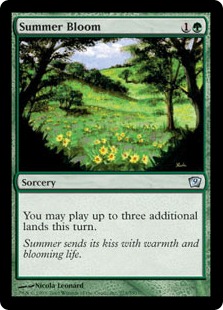 unsupportable changes. This included arguments for an Amulet Bloom and Grishoalbrand ban, whether Amulet of Vigor/Summer Bloom or Griselbrand/Nourishing Shoal. Or both. Or all four, just to be safe! Thankfully, level heads prevailed at Wizards and it was the "No Changes" announcement heard across the world. As I discussed in both my banlist prediction article and my announcement review, this shouldn't have been a surprise to anyone paying attention. Neither Bloom nor Grishoalbrand were turn four rule violators because neither deck was top-tier. This made them ban-proof in July and should have insulated them from all the torches and pitchforks aimed their way throughout the summer. In case you needed any further evidence about the decks' safety in Modern, head on over to the Day 2 breakdown for SCG Charlotte. With a single player on each deck, and only the Grishoalbrand player cracking the Top 32 at 24th place, the event showed that both decks were far safer than many gave credit. Or, perhaps more accurately, it showcased the format's ability to self-regulate potentially broken decks.
unsupportable changes. This included arguments for an Amulet Bloom and Grishoalbrand ban, whether Amulet of Vigor/Summer Bloom or Griselbrand/Nourishing Shoal. Or both. Or all four, just to be safe! Thankfully, level heads prevailed at Wizards and it was the "No Changes" announcement heard across the world. As I discussed in both my banlist prediction article and my announcement review, this shouldn't have been a surprise to anyone paying attention. Neither Bloom nor Grishoalbrand were turn four rule violators because neither deck was top-tier. This made them ban-proof in July and should have insulated them from all the torches and pitchforks aimed their way throughout the summer. In case you needed any further evidence about the decks' safety in Modern, head on over to the Day 2 breakdown for SCG Charlotte. With a single player on each deck, and only the Grishoalbrand player cracking the Top 32 at 24th place, the event showed that both decks were far safer than many gave credit. Or, perhaps more accurately, it showcased the format's ability to self-regulate potentially broken decks.
Have we seen the last of either Amulet Bloom or Grishoalbrand? Absolutely not. These are still strong combo decks which will absolutely rise again, especially when the metagame least expects it. As the past  months have shown, however, our format is well-prepared to check their rise. SCG Charlotte was a major datapoint in this narrative because it happened after the banlist announcement. There was considerable buzz around the decks before July and it was entirely possible that Modern players were actively avoiding decks which could be banned. The July announcement should have eliminated any lingering doubts and fears in this regard and any skeptical players should have invested in the decks. If this happened it didn't affect the top tables at the SCG Open, and if the rest of the metagame is any indication, these decks are still solidly tier 2 and exist in a very fair and balanced place right now. You would be foolish to totally forget about these decks and come unprepared to face them, but the hate cards (Blood Moon, Relic of Progenitus, [mtg_card]Dispel[/mtg_card, etc.) are relatively accessible and highly relevant across matchups. Come prepared and show the format why these decks are not monsters to be feared but rather diverse combo representatives to be embraced.
months have shown, however, our format is well-prepared to check their rise. SCG Charlotte was a major datapoint in this narrative because it happened after the banlist announcement. There was considerable buzz around the decks before July and it was entirely possible that Modern players were actively avoiding decks which could be banned. The July announcement should have eliminated any lingering doubts and fears in this regard and any skeptical players should have invested in the decks. If this happened it didn't affect the top tables at the SCG Open, and if the rest of the metagame is any indication, these decks are still solidly tier 2 and exist in a very fair and balanced place right now. You would be foolish to totally forget about these decks and come unprepared to face them, but the hate cards (Blood Moon, Relic of Progenitus, [mtg_card]Dispel[/mtg_card, etc.) are relatively accessible and highly relevant across matchups. Come prepared and show the format why these decks are not monsters to be feared but rather diverse combo representatives to be embraced.
Post-SCG Charlotte Modern
Just because a deck didn't make the hits and misses list today, doesn't mean it didn't have a good (or bad) weekend at Charlotte. Affinity was quite solid, as were Merfolk and Infect. Abzan Company saw a slight comeback after weeks of mediocre performance, but Elves crashed and burned.
Also, Lantern Control. Give me more Lantern Control please.
Hopefully we'll see more of these decks in the coming weeks, especially as we gear up for GP Oklahoma City. I'm particularly excited to see more Grixis Control as a mainstay in Modern's top-tiers: our format needs more interactive policing decks, and Grixis (plus Captain Jace) fits that bill nicely.
What decks did you see succeed at the Open? Did you go yourself and bring any awesome tech we should know about (or encounter it over the weekend)? Are there any other takeaways you think I missed? Let me know in the comments and get excited for an upcoming metagame breakdown to hopefully be released next week!
Editor's note: An earlier version of the article incorrectly classified Robert Chase's Grixis Twin list as a UR Twin list. The article has been corrected to reflect this inaccuracy.


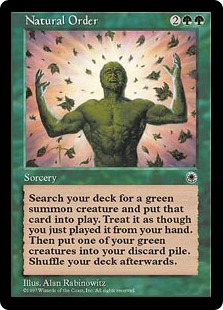


The list posted as UR Twin was actually grixis with main board terminates. The deck side boarded the tasigur, kommand, and some discard spells. So not every grixis deck in top 32 main boarded tasigur.
Good catch. I actually classified this correctly in the spreadsheet and then forgot about the SCG misclassification when I was writing up the article. I’ve edited the article to reflect it, although it doesn’t diminish Tasigur’s importance in Grixis.
Boy, these Evolutionary Elves were real joy to watch. Want to see more of tournament presence of that.
Agree. Cool card and a great use for it. Too bad they didn’t crack the T32 (my guess is that they have more development) but I’m sure we’ll see them again.
20th place esper tap-out gets no love???
Can’t give love to every single cool deck near the top! The Esper Control finish isn’t quite as significant as the Emeria Control one either. The fact alone that Esper is running Snapcaster puts the deck in a different category from the Snapcasterless Emeria list. Still a breakout performance for the Esper players, and I hope we see more of their work in the future!
I’m getting ready to play at GP Porto Alegre with amulet bloom, lets see what will change till there!
If we see a shift back to Abzan from Jund, that would be great news for Amulet Bloom players (way less Blood Moon around). Definitely let us know how it goes when November rolls around!
Nice synopsis. I especially like the spotlight on the UW Control list (an underrated deck, even if some of the card choices made are a little odd to me). I’m a bit hesitant to go all-in with the “start of a shift in BGx” conversation with Abzan (as you said, Jund won the event outright – that has to count for something), and I would like to hear a bit more about the Merfolk and Infect lists that did really well (specifically, look at how many creatures the Merfolk deck has!).
Do you think you’ll be able to find someone qualified and able to do a primer on Lantern Control? It’s a tough deck to get a read on (and not that many people run it), so I think it would be really helpful.
As I mention throughout that section, I am also hesitant to identify a big Abzan shift, even if I do feel it’s important to identify the POSSIBILITY of that shift. If someone could get ahead of that, it would be a huge tournament breakthrough. For instance, if we predicted an Abzan shift going into GP Oklahoma City, Infect becomes an all-star choice. Abzan is definitely rising in the overall metagame statistics, but with the data we’ve collected so far, it’s still tier 2 and still not rising as quickly as we would expect if a full shift were underway.
I am in the market for a Lantern Control expert and I am in talks with some candidates! Hopefully we’ll get this up next week.
I’d love to hear more in your opinion on Tom “The Boss” Ross’s infect. He made it to semis and his list was very interesting, dropping down to 2 Might of Old Korosa and only 1 Mutagenic growth which before the tournament people considered a 4 of undoubtably. I think his list seems very strong especially a mainboard 1 of piracy charm.
The best part of Ross’s list is Serum Visions. We’ve seen very few cantrips in recent successful Infect lists (Finkel and Hill at PT FRF didn’t run them, nor did Juza at GP Singapore), and it’s a great card in Modern . Variance reducers are big in decks that need to find specific pieces and decks that fold to specific enemy sideboard hate, and Visions gives Infect a significant edge in many situations. Piracy Charm is also awesome, particularly against a field heavy with Affinity, Elves, and Abzan Company. I expect we’ll see more Infect if the format indeed creeps back to Abzan.
I’m still amazed that no one is playing Jund Rhinos xD
Without Deathrite Shaman, a Jund Rhinos manabase is really shaky. I think a lot of Jund players don’t want to tank their Burn matchup (or their Affinity or Merfolk matchups, for that matter), and adding Rhino doesn’t really offset all the lifeloss you incur getting it online.
I really find that fetching for a plains turn 4 and netting 2 life to be worth it, plus a 4/5 trampler, and 3 dmg to opponent ( wow, can’t believe they printed this ) the main reason for this addition is the insane ability to close out a game much faster than if you were to use a liliana, I love her to death and she’s in my sideboard but rhino just does so much more. ( in ither words switching from control to aggro ) This makes the threat base more solid and more room for removal ( to change easier between control and aggro ) and k com is great in many matchups, 2 for 1 aggro decks, comeback against control and am absolute beating in tempo and midrange matches. The doctor ( rhino ) isn’t to help against aggro, it’s just a great card that we should just play, gets us back in the game, remember Ajundi? It’s ajani but better 🙂
JunkD
4 siege rhino
4 tarmogoyf
4 dark confidant
3 scavenging ooze
1 tasigur
4 lightning bolt
4 inquision of kozilek
3 kolaghan’s command
3 terminate
3 abrupt decay
2 thoughtseize
1 slaughter pact
4 raging ravine
4 blackcleave cliffs
4 verdant catacombs
4 marsh flats
1 overgrown tomb
1 stomping ground
1 temple garden
1 blood crypt
1 godless shrine
1 swamp
1 forest
1 plains
This deck kicks major ass, been working on it since the release of k command.
This may be somewhat off topic, but it’s a pet peeve of mine and something I’d like to hear other people’s opinion on: what’s with the lack of Affinity coverage? I’ve watched every Modern GP/SCG Open/Pro Tour of the last two years, and, without going back and double checking, I would venture to say that only a third of all those show a single Affinity match in its entirety. Two lists made top 32 at this event, including one at 9th which probably got shifted out of top 8 on tie-breakers, and yet, barely a mention at all in coverage.
Amulet Bloom, GR Tron, Bogles, Merfolk, Abzan Company, Elves: these are all decks which see less play as Affinity at essentially every tournament, yet make it on to coverage more regularly. Don’t get me wrong, I’m happy to watch Modern’s variety on display, but I’ve sat through enough Twin mirrors, Pod mirrors (last year, obviously), and Burn matches to know there comes a time when it’s not about diversity anymore, Affinity just doesn’t get camera time.
So the question is, does anyone have a theory on why this happens? My only two are either a) not enough “name” players are on the robots or b) coverage (both scg and wizards) are somehow worried it’ll stir up bad feelings from the Standard Affinity days, but that seems like a stretch, especially considering that EVERYONE says they hate losing to Burn and it still gets air time at every single event,
According to this – http://mtgcoverage.com/index.php?formattype=modern&SD=3 – you would’ve been able to see Affinity in 6 matches over the course of the last 2 GPs.
It’s also probably got something to do with results and that GP Singapore (where Affinity shone) wasn’t covered.
The deck in 9th was probably playing a win and not-in match which didn’t have much going for it (you can usually work out from breakers that the 9th place guy wasn’t going to make it) – meanwhile we got a game which mattered for Logan Mize.
To be honest, I sometimes wish there were more of deck ‘X’ – where X is the deck I happen to be playing with. They’re there – but because we’re specifically looking for it it happens less than we’d like.
While than may be somewhat true recently, the website you linked to shows, if you go back some, that I’m not as biased as it may seem. Here are the # of on camera Affinity matches for the last 11 big events (scg, gp, and pt):
sch char = 0
gp copenhagen = 3
gp charlotte = 1 + 1 tail end of gm 3 in top 8 (I won’t count this second one in my total since it last all of 5 minutes)
scg balt = 0
gp van = 1 pre-top 8 (3 total, but featuring it in the finals is hardly a choice, so I take that one with a grain of salt)
pt frf = 1
gp omaha = 0
gp milan = 1
gp madrid = 1
gp boston = 3
gp minneapolis = 0
total matches covered over 11 events: 12
Which averages out to once per event, but check out this breakdown of other decks which were similarly tiered for the same period.
Coverage of Twin/Burn/Abzan or Jund (I lumped them together because very few events showcase both together much, it’s one or the other, depending on the meta, but it’s BG/x coverage either way.
sch char = 2/4/2
gp copenhagen = 1/0/2
gp charlotte = 6/1/4
scg balt = 8/1/4
gp van = 5/0/2
pt frf = 5/5/8
gp omaha = 3/1/1
gp milan = 1/2/1
gp madrid = 1/0/0
gp boston = 1/2/7
gp minneapolis = 3/1/5
twin total: 36
burn total: 16
bgx total: 36
So it turns out there was less Burn than I expected, but Twin variants and BG/x both clock in at over 3 times the amount of coverage as Affinity gets. Affinity is more or less 10% of the field at every event, consistently puts several copies into day 2, and just doesn’t get that much camera time for it. In fact, I’m pretty sure I could find as much coverage for Abzan Company as for Affinity, even though the deck existed for half the period I’m covering.
Lastly, about the 9th place list, I wasn’t saying it should necessarily have been featured in round 15, I’m just saying that if a list made it that far in, it doesn’t seem unreasonable to expect it to show up on camera once in the 15 swiss rounds.
why no love for lantern? 🙁
Lantern needs so much love that it should have its own article.
More seriously, I’m hesitant to call it a “Hit” because the deck hasn’t put up a lot of results in between GP Charlotte and SCG Charlotte. UW Emeria Control has seen MTGO play for a while now, so there’s at least precedent for its wider metagame adoption. Lantern Control, however, still needs more time and finishes. That doesn’t mean I don’t love the deck (MOAR LANTERNZ PLIZ), but it does mean we need more time with it to see where it stands.
of course, but i think that a lot of the lack of success of the deck is because a lot of people hate it or think that is a bad deck or something, and of course, seems like a pain to play on mtgo